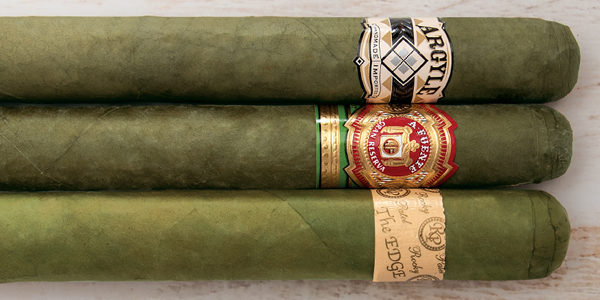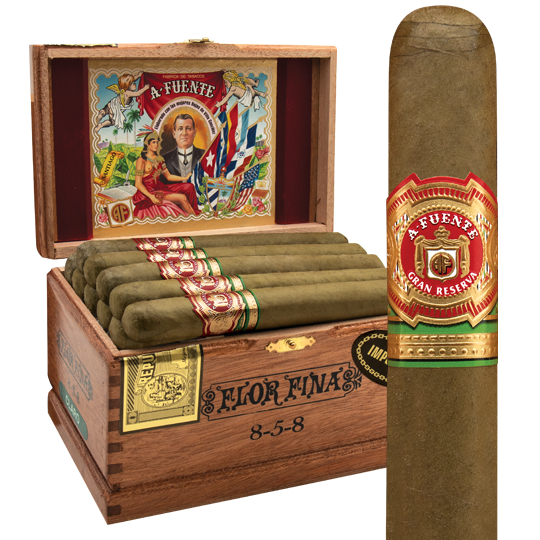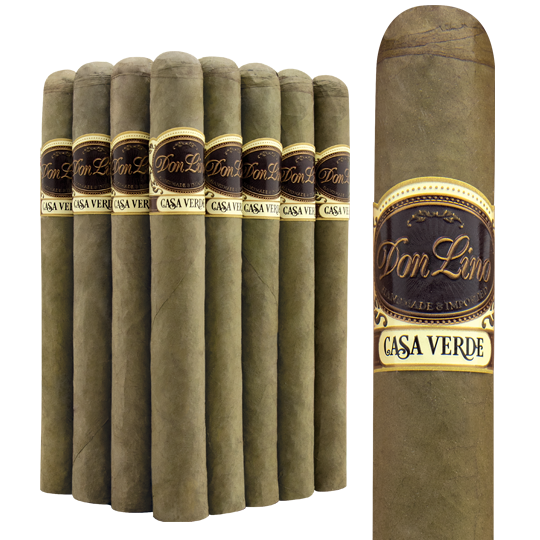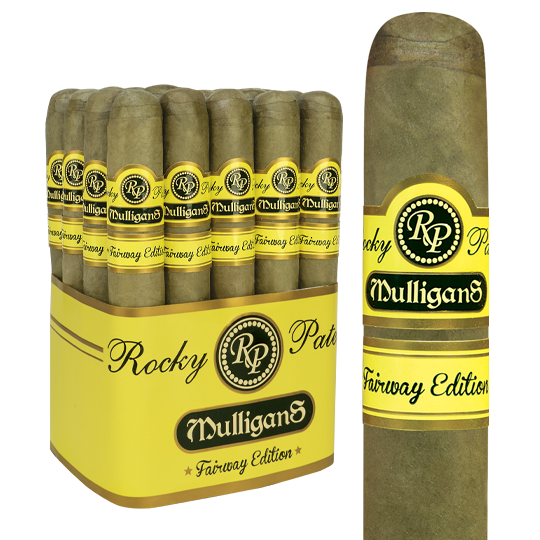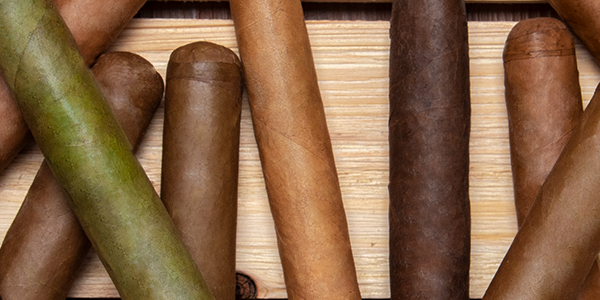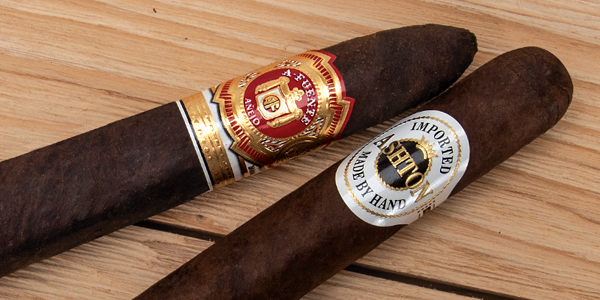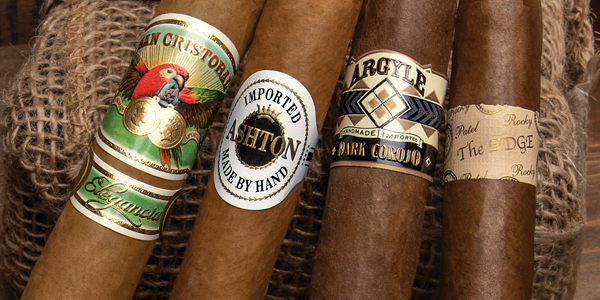All About Candela (Green) Cigar Wrappers
When I talk to new or young cigar smokers, they are intensely interested in knowing just about everything they can learn about cigars. Where did they originate? How many kinds are there? What’s the best cigar? And why is this cigar green? Yep. I’ve actually been asked why a cigar is the color of, well, the leaf it came from while that leaf was still part of the plant that was still in the ground.
The Green Cigar History
Green cigars, or more precisely cigars with green wrappers, are officially known as Candela cigars. They originated in Cuba in the 1940s as an alternative to the fuller-bodied smokes the island produced. There was a demand in the U.S. for milder cigars and Candela cigars filled the need. That is, until the Candela tobacco ran out. To meet demand, instead of curing the tobacco properly, manufacturers would freeze the light-colored tobacco to keep it green. After that, a quick fire-cure would take it to an even greener shade. The popularity of Candela grew to such a degree, it was estimated that 90 percent of cigar smokers preferred it. Other cigar makers were, um, green with envy and also started making Candela cigars. After the U.S. imposed an embargo on Cuba in 1962, cigar-makers outside of Cuba tried to make Candela cigars with Dominican tobacco. They were sour. The old Cuban Candela was sweet, tasting a bit like pineapple. So, the Candela, also known as Double Claro, faded into the shadows of cigar history. Today, only about as much as three percent of cigar sales are Candela, smoked by mainly veteran (older) cigar smokers who still love them.
The Long Green Mild
Candela wrapper is considered to be the mildest wrapper, conveying a sweet, grassy flavor. Not strong at all, really. The flavor is more from the leaf than from the soil. Some of today’s Candela, or Claro, cigars are a bit stronger due to their filler tobacco, but none is something you’d call powerful. That’s the case with the Arturo Fuente Claro, say in a classic 8-5-8 size (6 x 47; about $6). This is a very green wrapper surrounding Dominican filler that delivers flavors of grass and green tea. There’s a sweetness that hints at butter. This cigar has been rated well by Cigar Aficionado.
Rocky Patel’s The Edge now sports a more muted green Candela-wrapped Toro (6 x 52; about $7 to $8) that is full of Honduran tobacco. Tasting notes of green tea and hay are present here as well, but so is some sweet spice. Delicate is the word for this cigar.
For just $2.00, Don Lino’s Casa Verde Churchill (7 x 50) is a milder Candela made in the Dominican Republic. Yes, green tea, hay, and some buttery toast, but this one also hints at fennel. This one is among the sweeter Candelas out there. Argyle Candela and Rocky Patel Mulligans Fairway Edition also represent an excellent value in blends wrapped in the peculiar green leaf.
Turning Tobacco Green
The first Candela tobacco was the result of an accident, the story goes. In the 1940s, some Cuban farmers would use heat to warm up their curing barns to balance excess humidity. If it got too hot, the leaves from the lower part of the tobacco plant would turn green. Cigars were made from the green leaves and people seemed to enjoy the flavor.
Making Candela is easier than making a browner, more flavorful wrapper. Unlike tobacco wrapper like Connecticut Shade or Ecuador Habano, which get their names from where they’re grown; and unlike naming the tobacco after the seed it comes from, Candela wrapper gets its name from the process of making the leaves green. So, there’s Candela from many countries, but all the leaves are green. There are basically three different shades of Candela: yellowish green; a dark green; and a green-green.
First, the Candela leaf is picked before it has fully matured. When the leaves go to the curing barn, every effort is made to keep the sun out. Wallpaper or cardboard seals any cracks in the barn walls. The fresh tobacco fills the barn and the vents at the top and bottom are fully opened, allowing air to flow through freely. The leaves are heated very slowly, rising from 90 degrees up to as high as 175, the latter temperature being reached to dry out the stems. The last step takes 24 hours and leaves the tobacco extremely dry. (In a normal tobacco barn, the leaves have a gummy texture.)
The next step is to rehydrate the tobacco so it can be handled safely and taken from the barn. The doors are opened and the dew of the night is used to make the leaves moist again. If there’s not enough moisture in the air, steamers are used. From there, the leaves are taken down, sorted and graded. They get put into boxes for storage and rolling. Fire curing like this eliminates the need for fermentation and aging, reducing by many months the process of prepping the tobacco.
Turning You Green
Legendary cigar maker Ernesto Perez-Carrillo likes to tell the story of his first experience smoking a Candela cigar. His father used to make them and they were very popular in the 1950s, Perez-Carrillo told Cigar Aficionado. It’s something to take into account before trying your first Candela.
“I was about 18, and at that time. I was playing drums and I had a Mustang,” he said. "I got into my Mustang and lit a candela panetela." He smoked as he drove, doing research, keeping the windows up.
“I really wanted to get the aroma of the tobacco,” he said. He smoked the cigar all the way to the show, and he began playing onstage. He made it almost an hour before he got sick.

